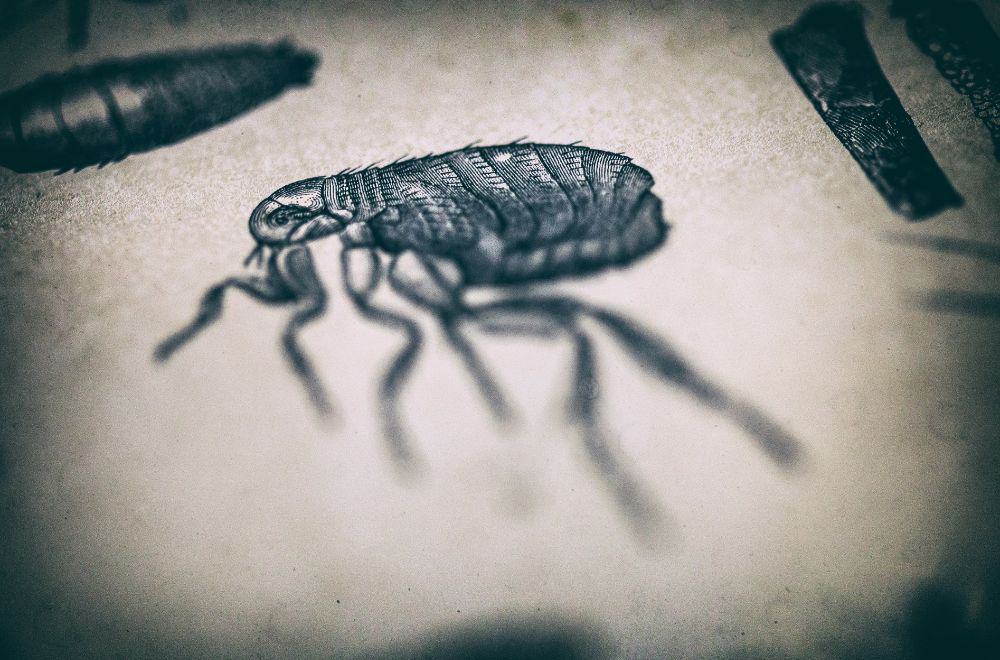If you’re a pet owner, one thing you’re probably always concerned about is your furry buddy picking up fleas from outside and bringing back an infestation – because when this happens, it can be notoriously hard to deal with.
However, at some times of the year, fleas seem to disappear, and new infestations just stop happening, so when is flea season where you live? And what determines it? To help you understand, in this post, we look at the question, when do fleas die?
When is flea season?
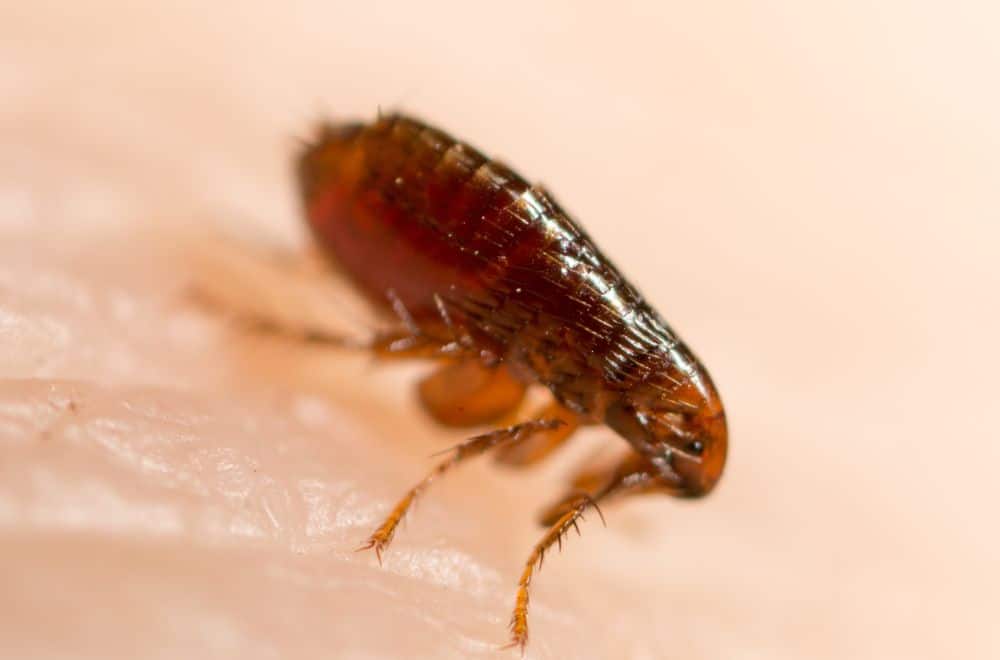
When people ask about when fleas die, they’re probably most interested in knowing when flea season ends and fleas are no longer active.
This is because outside of “flea season”, pets are unlikely to pick up new infestations from outside and bring them back home.
So when is flea season? And during which parts of the year are fleas active?
The answer to these questions is, it depends where you live.
In certain parts of the US, such as California, Texas, Florida and a few other mostly coastal states, there is no flea season, meaning pets can be infected at any time of year.
In most of the rest of the US, fleas disappear in December, returning the following spring.
However, in some states, mostly those further north, adult fleas disappear in November – or in the case of Alaska, in October.
This means that, depending on where you live, flea season can be between six and nine months long – while in some parts of the US, there is no flea season, and your pets can pick them up at any time.
However, things are a little more complicated than fleas simply dying in winter and new fleas being born the following year, so let’s take a look at what’s happening in a bit more detail.
Fleas and the flea lifecycle
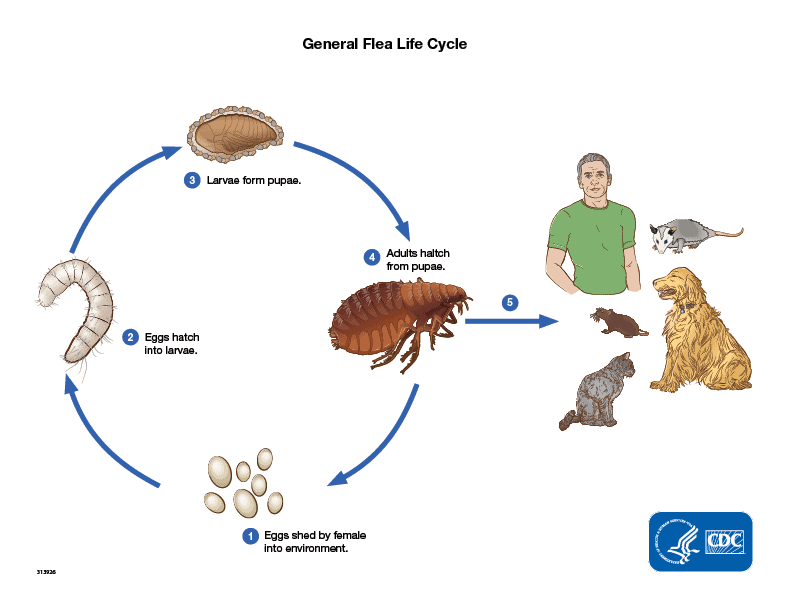
Image Credit: cdc.gov
When we think of fleas, we tend to picture them in the adult stage, but this is only the final part of their life, and adult fleas usually make up only around 1-5% of a flea population.
The rest of the population is made up of 8-10% pupae, 34-35% larvae and 50-57% eggs – so if we want to know about how long fleas live and when they die, we need to understand a bit more about their lifecycle.
The lifecycle of fleas starts with an egg, from which a larva emerges after between around one to ten days, depending on the conditions.
Flea larvae then feed themselves on organic matter as well as “flea dirt” – the blood-filled excrement of adult fleas – until they are ready to pupate. This larval phase usually lasts between five and 20 days.
Then, once fleas go into their pupae, they can be ready to emerge as adult fleas within as little as four days. However, if no host is present, they can remain inside their cocoon for much longer, perhaps even as long as half a year or more.
On detecting a passing host, the adult flea emerges, jumps onto the host and begins to feed immediately. This is usually how our pets pick up fleas from outside.
Within 24 hours, adult fleas that have had a blood meal are ready to mate, and females will lay eggs soon after, restarting the cycle.
How long do adult fleas live?
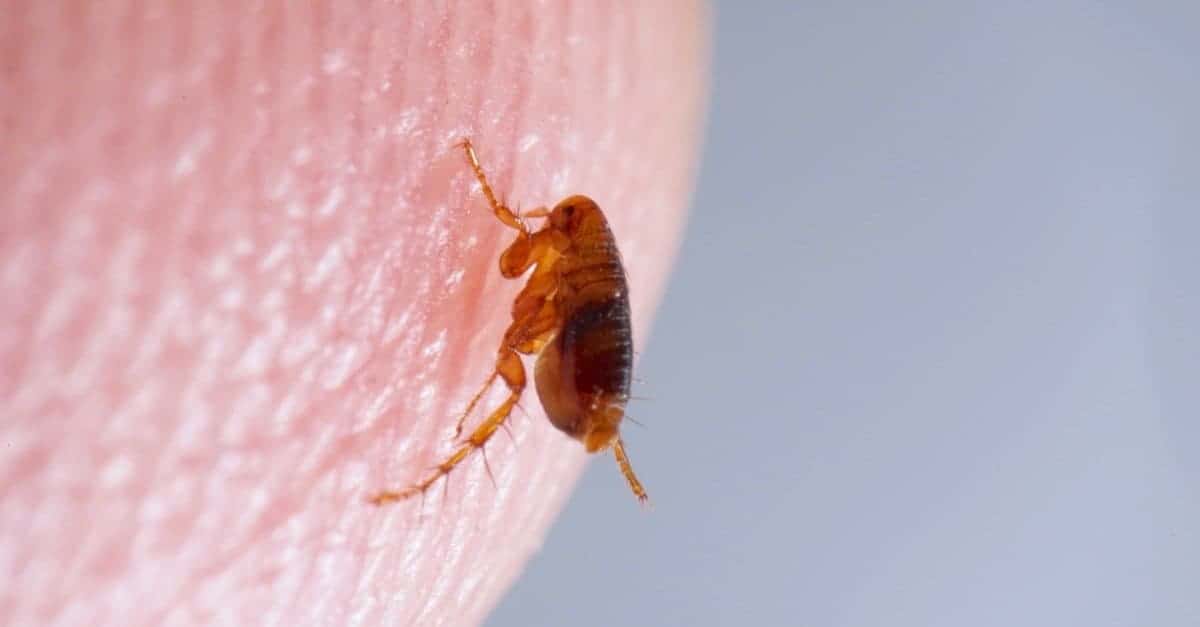
Image Credit: a-z-animals
But how long do the adults usually live?
If we’re talking only about the adult phase, in normal conditions, the life expectancy of a single flea living on a host is usually around two or three months – while with no host or access to blood to feed on, adult fleas can only survive a couple of days.
In optimal conditions, fleas on hosts can sometimes live as long as a year and a half.
On the other hand, in more unfavorable conditions, their lifespan can be considerably shortened – and one of the main factors in determining this is temperature.
How does temperature affect their lifespan?
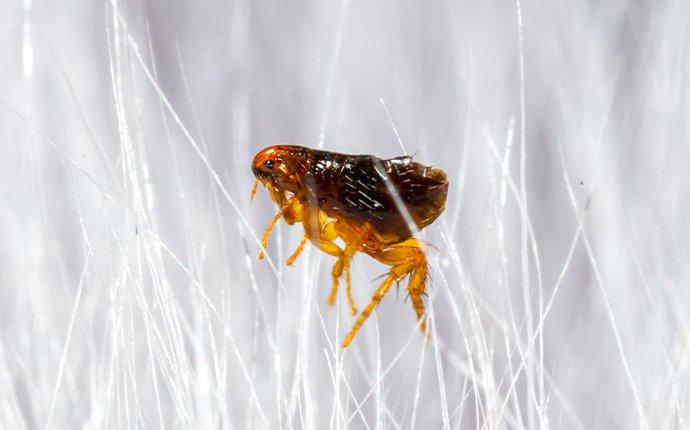
Image Credit: aikenpest
Apart from their access to blood, perhaps the most important thing that dictates how long an adult flea will survive is temperature since fleas cannot tolerate extremes of either hot or cold.
Optimal temperatures for adult fleas are between 80° and 90°F. However, at higher or lower temperatures, they die much more quickly.
At the upper end of the scale, fleas exposed to temperatures of 95°F or above will not survive for long. If the outdoor temperature remains above this threshold for at least 40 hours during a one-month period, fleas will die, even if there are cooler periods in between.
This means that during heatwaves, adult flea populations outside can collapse – although the ones happily living in our air-conditioned homes will still survive.
At the lower end of the scale, the picture is a little more complicated.
At temperatures of 46.4°F, adult fleas can survive for around 20 days, far shorter than would be expected in warmer conditions – and as the temperature drops, so does their life expectancy.
At 37.4°F, they will only survive for 10 days, but at 30.2°F, a little below freezing, they can only survive for a maximum of five days – and at these low temperatures, after only 24 hours, 20% will already have died.
So as we can see, temperature has an important role to play in the life expectancy of adult fleas, and this is the most important factor in determining the timing of “flea season” in various parts of the country.
Can fleas survive in the cold?
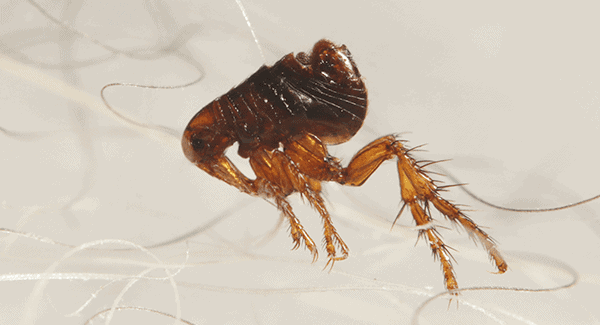
Image Credit: bigbluebug
Like adults, fleas in other stages of their lifecycle are also affected by temperatures, and in freezing or near-freezing temperatures, fleas in all stages of the lifecycle die quickly.
In addition, the colder the weather becomes, the slower fleas move through the various stages from egg to adult, reducing their capacity to breed and replenish their numbers.
So how do fleas as a species make it through the winter without all dying out?
The answer is that adult fleas living on the bodies of warm-blooded hosts do not all die out, even if the external temperature is very cold, because the warmth from the host keeps them alive.
Furthermore, fleas in other life stages may survive if they end up in the covered dens of animals that live underground or hibernate.
During these colder months, fleas might not be actively breeding or laying eggs, but they don’t all die off, and as soon as the temperatures begin to warm up, they are well placed to start mating and laying eggs to begin the cycle again.
So in fact, asking when fleas “die” is actually the wrong question, because they never all die.
However, since fleas can’t survive outside – either as adults or pupae – in freezing or near-freezing conditions, pets like cats and dogs can’t pick up new fleas from going outside, and so pet owners may mistakenly believe the fleas are all dead.
At the same time, it’s also important to remember that if you have fleas living inside your house, since your house is probably heated, the fleas can survive and breed year-round.
This means inside, there’s no flea season – and the fleas in your house will never eventually just die out.
What does all this mean for keeping your pets flea-free?

Although, as we’ve established, fleas don’t all “die out” in winter, in certain areas, fleas become less active, overwintering on their hosts’ bodies and not breeding due to the cold weather.
As a result, your pets won’t be able to pick up fleas from outside in the usual way of walking near flea pupae since any pupae left out in the open will have died in the cold weather.
In fact, the only way for a pet to pick up fleas outside in winter (in areas that have distinct flea seasons) is if it comes in close enough contact with a wild animal for a flea to jump from one animal to the other.
What this means is that during winter, you can relax a little when it comes to worrying about fleas arriving in your home and starting an infestation.
However, at the same time, it means that fleas that are already in your home won’t die out, so you’ll have to deal with the infestation in the same way you would at any other time of year.
It also means that if you take your pet to the house of another pet owner whose animal has fleas, it’s also possible for your pet to pick them up this way too.
And finally, you should also remember that if you live in a warmer part of the country where temperatures rarely drop low enough to cause fleas to stop breeding and go into overwintering mode, your pets can pick up fleas at any time of year, so you need to monitor them at all times.
Temperature is important in determining when flea season is
As we have seen, temperature is the key factor that determines when flea season starts and ends, and it varies throughout the United States – as it does throughout the rest of the world.
However, it is not just a simple case of fleas dying in winter and being reborn in the spring, and having read our post, we hope you now have a clearer idea of why.
